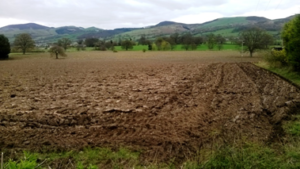There is little data and analysis available to support the benefits of natural flood management (NFM) in large catchments such as that of the River Clwyd in North Wales. The potential benefits need to be understood.
Time for WHS
WHS needed to get a comprehensive picture for Natural Resources Wales (NRW).
In our study of the Clwyd catchment:
- We reviewed the NFM options that might be applicable and assessed the history of land-use management practice to create a shortlist of options.
- We used a detailed bespoke hydrological model called CERF to estimate the impacts that land use change and management could have on flood flows (options included forestation, drain blocking and de-compaction of grazed areas).
- We mapped current land use and assessed the catchment geology and hydrology to assess where land use and management change could have maximum impact.
- We engaged with landowners and farmers at the local farmers’ auction to check our assumptions and gauge farmers’ views on NFM.
- We also prepared a matrix of the potential ecosystem benefits of applying NFM measures.
We concluded that flood flows could be significantly reduced in summer storms (when soils are relatively dry) but less in winter storms.
We recommended that flow measurements be taken in smaller parts of the catchment:
- to assess the impacts of NFM at a local scale
- to calibrate our theoretical hydrological model.
Result: NRW is using our study to inform catchment management policy and the EA is using it as a national case study in how to model catchment processes.
We confirmed that many farmers are positive about NFM. Some have already collaborated to investigate funding options for NFM.